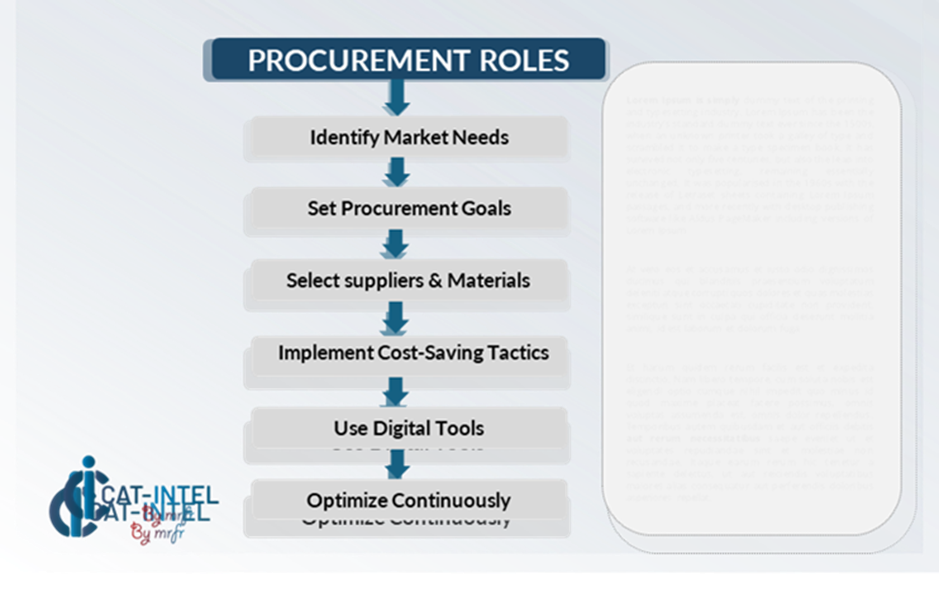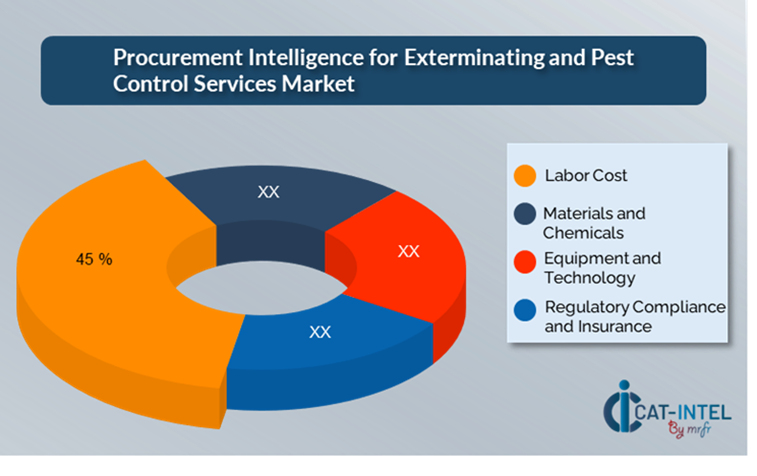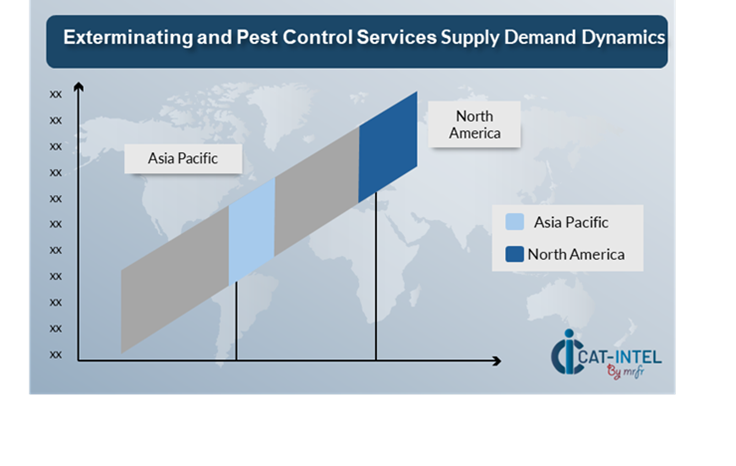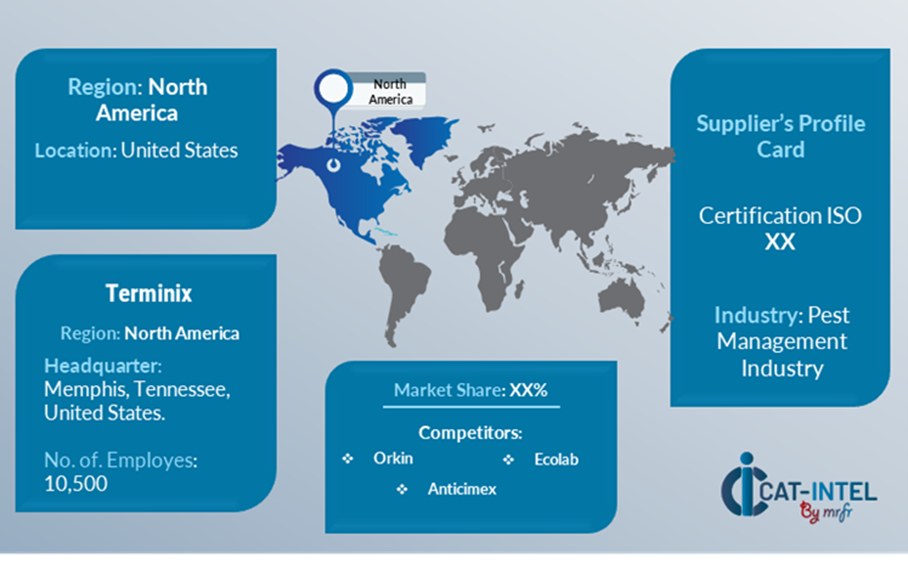Exterminating and Pest Control Services Market Overview:
The pest control and extermination services market is steadily growing in 2025, driven by increased demand in residential, commercial, and agricultural sectors. Growing concerns about health risks linked to pests, along with a push for more eco-friendly solutions, are prompting businesses to adopt sustainable and non-toxic pest control methods. As a result, there's a noticeable rise in the demand for green pest control products and services.
Technology is playing a major role in this growth, with innovations like smart pest control systems and data-driven approaches making pest management more efficient and reducing reliance on chemicals. The market is also benefiting from a wider focus on public health, safety, and sustainability, driving both demand and new solutions.
However, challenges still exist, such as keeping up with changing environmental regulations, finding effective pest control methods that don’t harm the environment, and tackling issues like pest resistance. To stay competitive, companies will need to embrace new technologies, eco-friendly solutions, and keep up with sustainability regulations.
- Market Size: The global Exterminating and Pest Control Services market is projected to reach USD 44.3 billion by 2035, growing at a CAGR of approximately 6.4% from 2025 to 2035.

- Sector Contributions: Growth in the Pest Control and Exterminating Services Market:
- Stricter Environmental Laws: Tougher regulations are pushing the industry to adopt eco-friendly, non-toxic pest control methods, increasing demand for natural alternatives.
- Corporate Sustainability: More businesses are choosing pest control services that focus on sustainability, like organic treatments and integrated pest management (IPM), to minimize environmental impact.
- Technological Improvements: Innovations like automated systems, smart monitoring, and digital tools are improving pest control efficiency and transparency.
- Industry Demand: Pest control is in high demand across sectors like residential, commercial, and agriculture as companies aim to maintain safe, healthy environments.
- Initiative: Governments and companies are investing in research for sustainable pest control solutions, encouraging eco-friendly practices and better service outcomes.
- Regional Insights: North America and Europe are embracing sustainable pest control to meet regulations and consumer needs, while regions like Asia-Pacific focus on eco-friendly practices for agriculture.
Key Trends and Sustainability Outlook in the Pest Control and Exterminating Services Market:
- Sustainable Pest Control Practices: A growing shift toward using natural methods and integrated pest management (IPM) to reduce environmental harm.
- Use of Eco-friendly Products: The demand for organic pest control products, like natural repellents, is rising in industries aiming to meet sustainability goals.
- Sustainability Efforts: Companies and governments are prioritizing eco-friendly technologies to reduce the environmental impact of pest control.
- Growth in Green Pest Control Services: As consumers and businesses seek greener solutions, demand for eco-friendly pest control services continues to grow.
- Technological Progress: Advances in pest control technology, like smart traps and data-driven platforms, are making pest management more efficient and sustainable.
Growth Drivers in the Pest Control and Exterminating Services Market:
- Digital Transformation: Tools like smart monitoring and remote pest detection are making pest control more efficient by providing real-time data to track and manage pest problems more effectively.
- Demand for Process Automation: Automation in pest control, such as drones for monitoring or automated traps, is improving efficiency, cutting labour costs, and ensuring consistent service quality.
- Scalability Requirements: As the need for pest control services grows, scalable solutions like mobile units and advanced treatment systems are helping businesses manage higher demand and respond faster.
- Regulatory Compliance: Stricter health and environmental regulations are pushing pest control companies to adopt safer, eco-friendly methods, ensuring they stay compliant while reducing their environmental footprint.
- Globalization: The growing focus on sustainability is increasing demand for eco-friendly pest control services, especially those using organic and non-toxic methods to meet consumer expectations for greener solutions.
Market Intelligence Services for the Pest Control and Exterminating Services Market:
Market intelligence services in the pest control industry provide key insights into trends, market shifts, and growth opportunities. These services include detailed analysis, competitive benchmarking, and forecasts that help companies make strategic decisions. They also keep businesses updated on regulatory changes, new pest control innovations, and evolving consumer preferences. With a broad market view, these services help companies tackle competitive challenges, stay compliant with regulations, and find new areas for growth in the pest control sector.
Procurement Intelligence for Exterminating and Pest Control: Category Management and Strategic Sourcing:
In the pest control industry, procurement intelligence helps organizations optimize sourcing by focusing on category management and strategic sourcing. This approach helps identify reliable suppliers who align with both cost and sustainability goals, while also exploring alternative sources to strengthen the supply chain. By monitoring market trends, assessing supplier performance, and ensuring compliance with regulations, businesses can make data-driven decisions that support sustainability efforts and reduce costs and risks.

Pricing Outlook for the Exterminating and Pest Control Services Market: Spend Analysis
The pricing outlook for pest control services is influenced by factors such as market demand, service complexity, industry trends, and broader economic conditions. By conducting spend analysis, companies can keep track of their pest control-related costs, understand what drives pricing, and monitor price changes over time. This helps businesses manage expenses effectively and make well-informed decisions about sourcing and procurement strategies.
Graph shows general upward trend pricing for Exterminating and Pest Control Services Market and growing demand. However, there may be fluctuations influenced by economic conditions, technological advancements, and competitive dynamic.

Optimizing procurement strategies, building strong supplier relationships, and adopting flexible sourcing approaches are key to controlling costs. Using digital tools to monitor market trends, applying analytics to predict service price fluctuations, and simplifying contract management can help reduce costs.
Building solid partnerships with reliable service providers, negotiating long-term contracts, and exploring subscription-based pricing models are effective ways to manage pest control expenses. Despite market challenges, focusing on scalable solutions, ensuring smooth implementation, and using cloud-based platforms to track the supply chain will be essential for maintaining cost efficiency and operational success.
Cost Breakdown for Exterminating and Pest Control Services: Total Cost of Ownership (TCO) and Cost-Saving Opportunities:

- Labor Costs: (45%)
- Description: This includes technician wages, training, and administrative staff salaries.
- Trend: Increasing demand for skilled technicians and remote service monitoring, leading to higher wages but also opportunities to reduce labour costs through automation.
- Materials and Chemicals (XX%)
- Equipment and Technology (XX%)
- Regulatory Compliance and Insurance (XX%)
Cost-Saving Opportunities: Negotiation Levers and Purchasing Strategies in the Pest Control Services Market
In the pest control industry, businesses can save money by securing long-term contracts with clients to lock in stable pricing and purchasing services in bulk to reduce per-unit costs. Negotiating flexible payment terms with both suppliers and clients can help ease cash flow issues, while sourcing from cost-effective suppliers or using eco-friendly, affordable pest control products can reduce reliance on pricier options.
Additionally, companies can earn certifications for sustainable practices, such as eco-friendly pest control, which opens doors to premium markets and potentially higher profit margins. Regularly assessing supplier performance and using competitive bidding can lead to better deals. Investing in advanced technology, like automated pest monitoring or eco-friendly pest control tools, can boost efficiency and reduce long-term costs.

Supply and Demand Overview for Exterminating and Pest Control Services: Demand-Supply Dynamics and Buyer Intelligence for Effective Supplier Relationship Management (SRM)
Understanding the supply and demand dynamics in the pest control industry is essential for businesses to make better contract deals, manage risks, and streamline procurement strategies.
Demand Factors:
- Urbanization and Population Growth: As cities grow and populations increase, more properties need pest control services to manage infestations, driving up demand.
- Health and Safety Regulations: Industries like food processing and healthcare must meet strict health standards, which require regular pest control to stay compliant and maintain safety.
- Seasonal Variations: Certain pests are more active during specific seasons, creating a recurring demand for pest control services at different times of the year.
- Consumer Awareness: With growing awareness of health risks from pests, both individuals and businesses are becoming more proactive in seeking pest control services.
Supply Factors:
- Regulatory Compliance: Pest control companies must follow local, state, and federal regulations, which can impact their service offerings and operational costs.
- Technological Advancements: New technologies like integrated pest management and eco-friendly treatments are helping pest control services become more efficient and effective.
- Market Competition: The high number of service providers in the market influences pricing and the quality of services offered.
- Supply Chain Dynamics: The cost and availability of pest control products and equipment can impact how services are delivered and priced.
Regional Demand-Supply Outlook: Exterminating and Pest Control Services
The Image shows growing demand for Exterminating and Pest Control Services in North America and Asia Pacific, with potential price increases and increased competition.

North America: Dominance in Exterminating and Pest Control Services
North America, particularly the United States, is a dominant force in the global Exterminating and Pest Control Services market due to several key factors:
- High Demand for Pest Control: With a large and growing population, especially in urban areas, there's a continuous need for pest control in homes and businesses across North America.
- Strict Regulations: The region has tough health and safety laws, making professional pest control essential to ensure compliance with these standards.
- Embrace of Advanced Technology: North American companies are quick to adopt the latest pest control technologies, like integrated pest management and eco-friendly solutions, making services more efficient and effective.
- Strong Economy: A stable economy means businesses and homeowners can afford regular pest control, helping the market grow steadily.
- Rising Awareness: People in North America are becoming more aware of the health risks pests pose, driving increased demand for professional pest control services.
North America Remains a key hub for Exterminating and Pest Control Services Price Drivers Innovation and Growth.

Supplier Landscape: Supplier Negotiations and Strategies in the Exterminating and Pest Control Services Market
In the pest control industry, suppliers can stay competitive by focusing on cost-effectiveness, improving service quality, and offering extra benefits like flexible scheduling and eco-friendly treatment options. Ensuring consistent, reliable service is critical for businesses across residential, commercial, and industrial sectors. By securing long-term contracts and emphasizing sustainable practices, such as using integrated pest management (IPM) and eco-friendly methods, suppliers can build stronger relationships and ensure ongoing demand for their services.
To reduce risks, suppliers diversify their offerings and use strategies like forward contracts to manage price changes. They also keep an eye on market trends and adjust their pricing to stay competitive. Larger suppliers benefit from economies of scale, while smaller, local ones can leverage their regional expertise and flexibility. As customers increasingly prioritize sustainability, suppliers are investing in greener production methods to meet these expectations and strengthen their position in negotiations.
Key Suppliers in the Exterminating and Pest Control Services Market Include:
- Terminix
- Rentokil Initial
- Orkin
- Ecolab
- Anticimex
- Rollins Inc.
- Massey Services
- Terminix Global Holdings, Inc.
- PestCo
- BASF Pest Control Solutions

Key Developments Procurement Category Significant Development:
|
Significant Development |
Description |
|
Market Growth |
The pest control and exterminating industry is developing as demand rises in sectors such as residential, commercial, and industrial environments, seeking professional pest control services as the demand for effective pest management solutions develops due to health concerns, regulatory standards, and urbanization. |
|
Product Innovation |
New eco-friendly pest control options, like non-toxic treatments and smart monitoring systems, are emerging, creating new opportunities in the market. |
|
Technological Advancements |
Technologies like smart traps and automated systems are improving pest control efficiency and sustainability, changing how companies approach procurement. |
|
Global Trade Dynamics |
Changes in global trade regulations and pesticide standards are impacting the market, and suppliers are adjusting to ensure compliance while keeping costs down. |
|
Customization Trends |
With growing industry-specific needs, there’s rising demand for tailored pest control services, leading companies to adapt their procurement processes to meet these unique demands. |
|
Exterminating and Pest Control Services Attribute/Metric |
Details |
|
Market Sizing |
· The global Exterminating and Pest Control Services market is projected to reach USD 44.3 billion by 2035, growing at a CAGR of approximately 6.4% from 2025 to 2035. |
|
Exterminating and Pest Control Services Adoption Rate |
By 2025, it's expected that about 50% to 60% of pest control businesses will start using advanced technology like cloud-based systems. This shift will help these businesses work more efficiently, cut down on mistakes, and be more flexible. |
|
Top Exterminating and Pest Control Services ERP Industry Strategies for 2025 |
New pest control technologies, especially eco-friendly options and integrated systems, are gaining popularity as they are more effective and align with consumer demand for sustainable solutions. |
|
Exterminating and Pest Control Services Process Automation |
Around 45% businesses, the adoption of process automation technologies, including digital monitoring and data analytics, is expected to play a significant role in this expansion, contributing to more efficient and effective pest control solutions. |
|
Exterminating and Pest Control Services Process Challenges |
The market faces challenges like economic volatility, which can affect consumer spending on pest control services. In addition, pest control businesses need to navigate various regulations across different regions, which can be complex.
|
|
Key Suppliers |
Leading Service providers include Rentokil Initial, Terminix and Orkin companies in the market globally.
|
|
Key Regions Covered |
North America and Europe are embracing sustainable pest control to meet regulations and consumer needs, while regions like Asia-Pacific focus on eco-friendly practices for agriculture. |
|
Market Drivers and Trends |
Several factors are pushing the growth of this market, including increased awareness about the health risks pests pose, growing concerns about hygiene, and the need for businesses in sectors like food and hospitality to comply with strict regulations.
|
Frequently Asked Questions (FAQ):
Procurement intelligence helps by tracking service costs, evaluating service quality, and managing risks. By analysing supplier performance, market trends, and historical data, businesses can make better decisions when selecting pest control providers, ensuring they get the best value and minimize risks.
The total cost of pest control includes service fees, labour costs, equipment, maintenance, and costs for ensuring regulatory compliance. By considering all these factors, businesses can understand the full financial impact and avoid hidden costs.
Key risks include unreliable providers, subpar equipment, non-compliance with regulations, and service disruptions. These risks can affect the effectiveness and safety of pest control services, which is why it's important to carefully assess potential providers.
Building strong relationships involves clear communication, regular check-ins, and aligning on expectations. Collaborating on sustainable pest control solutions and creating a sense of partnership can lead to long-term, productive working relationships.
Best practices include conducting thorough research on potential providers, evaluating their reputation and track record, and negotiating contracts with clear service expectations. It’s also important to review providers based on their ability to offer cost-effective and sustainable solutions.
Digital tools like AI-based pest detection systems and automated scheduling can increase service efficiency and accuracy. These technologies help identify pest issues earlier and ensure timely interventions, ultimately enhancing customer satisfaction and reducing overall costs.
Tracking supplier performance ensures that pest control services are consistent and effective. By monitoring key performance indicators (KPIs), such as response times and treatment success rates, businesses can ensure that providers meet their expectations and maintain high-quality service.
Negotiating better terms involves securing long-term contracts, leveraging bulk service deals, and staying updated on industry pricing trends. Building strong, ongoing relationships with providers can also lead to better rates and more favourable contract terms.
Tools like market research platforms, pricing comparison websites, and customer feedback surveys can help analyse trends, pricing, and customer satisfaction. These tools provide valuable insights into the market and can guide decision-making when selecting pest control providers.
Ensuring compliance involves selecting certified and licensed providers who follow industry standards and regulations. Regular audits, inspections, and keeping up to date with changing laws help maintain compliance, reducing the risk of fines or legal issues.
To manage disruptions, it’s essential to work with multiple providers, maintain backup plans, and ensure flexibility in contracts. This allows businesses to quickly adapt if one provider faces issues and ensures that pest control services continue without interruption.
Tracking performance can be done using KPIs like service timeliness, treatment effectiveness, and customer feedback. Regular reviews, audits, and performance assessments help ensure providers maintain high standards and deliver consistent service.
Sustainability practices include using integrated pest management (IPM) methods, which reduce pesticide use by combining various pest control strategies. Choosing providers that use eco-friendly chemicals, practice waste reduction, and promote environmental health supports long-term sustainability goals.
Competitive pricing can be achieved by conducting thorough market research to understand current rates, negotiating long-term contracts, and considering bulk or multi-location service deals. Partnering with reliable, cost-effective providers also ensures better pricing in the long run.
Improving sustainability involves selecting providers that use IPM, low-toxicity chemicals, and responsible pest control practices. Additionally, working with companies that emphasize reducing environmental impacts and adopting sustainable technologies helps achieve long-term sustainability goals in pest management.








